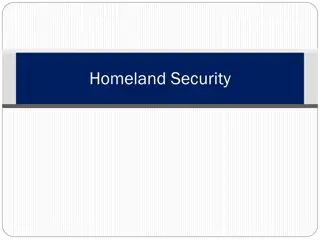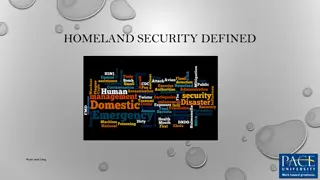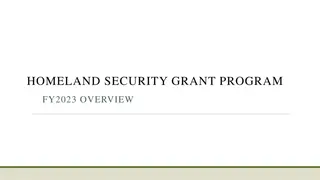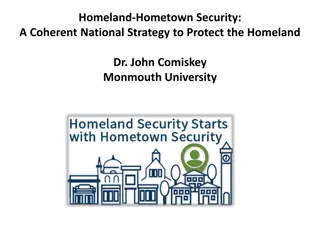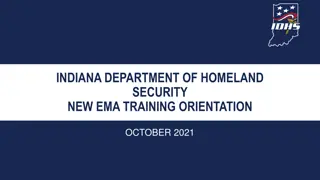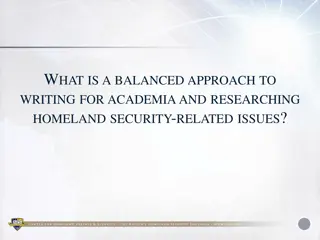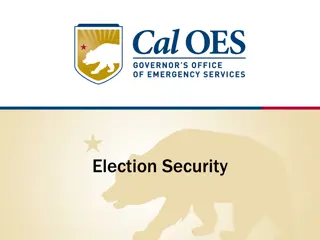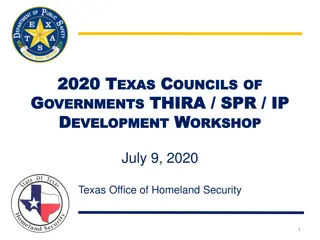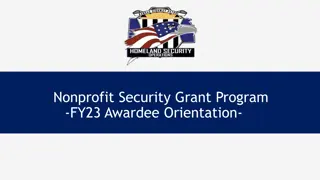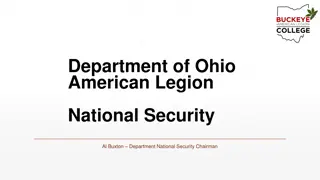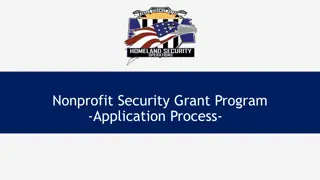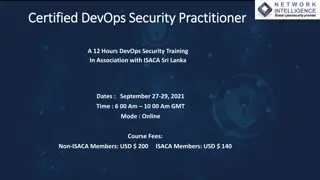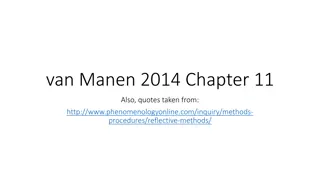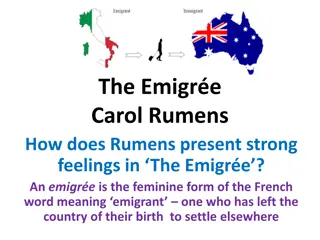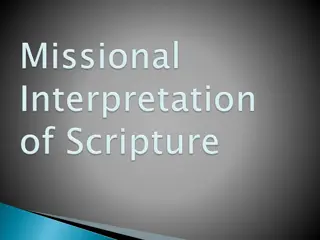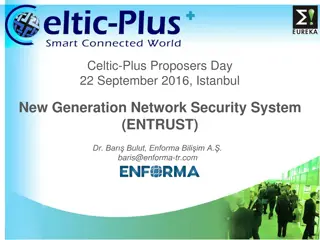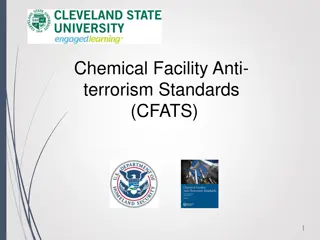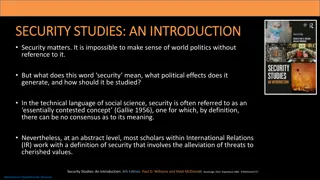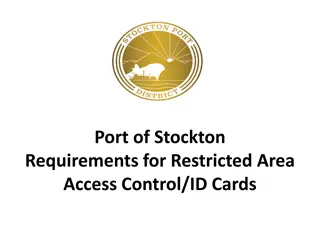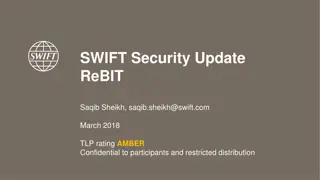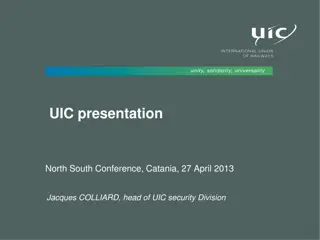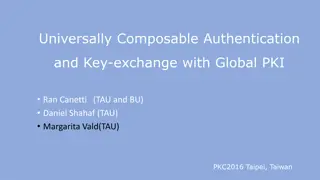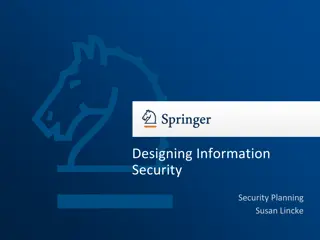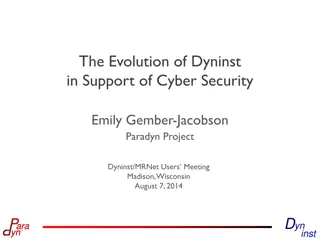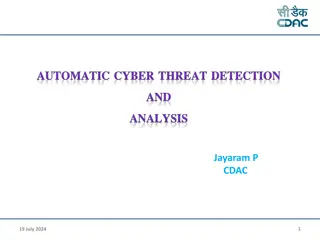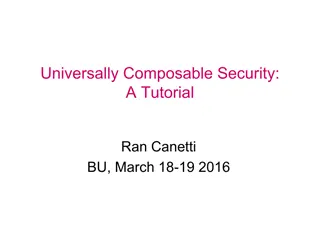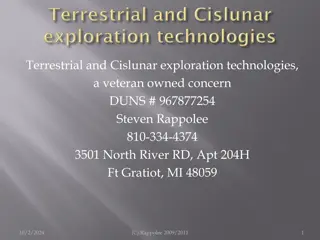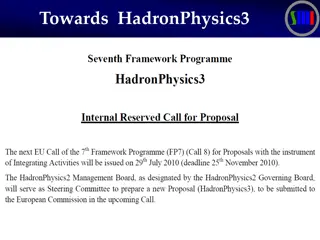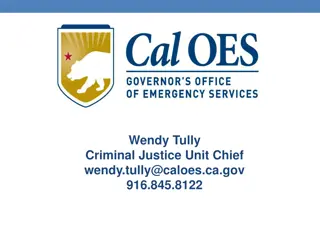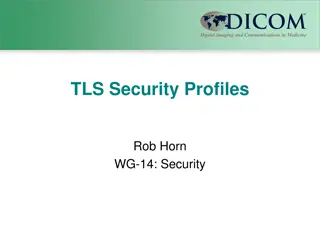Understanding the Evolution of Homeland Security: A Hermeneutic Exploration
This study delves into the evolution of homeland security through a hermeneutic phenomenological approach. It examines how the term has been defined, managed, and linked to SMART goals in various documents from 1999 to 2015. Considerations are given to different management styles and biases that may influence interpretations.
Download Presentation

Please find below an Image/Link to download the presentation.
The content on the website is provided AS IS for your information and personal use only. It may not be sold, licensed, or shared on other websites without obtaining consent from the author. Download presentation by click this link. If you encounter any issues during the download, it is possible that the publisher has removed the file from their server.
E N D
Presentation Transcript
The Evolution of Homeland Security: A Hermeneutic Phenomenological Exploration Toward Defining the Term Tina M. Bynum, DM-Homeland Security Colorado Technical University 22 March 2017
Overview Explore a definition of homeland security Bellavita What is Homeland Security Purpose Strategic Management & Planning Consistent Allocation of Resources Developing Curriculum Establishing an Academic Discipline Methodology Hermeneutic Phenomenological Exploration Document Analysis Implications Conclusions 2
Scope to understand the evolution of the term homeland security To determine if and how this term has been defined in the government literature To uncover use of management principles (e.g., Drucker s SMART Goals) To determine if a single definition can be used conceptually and operationally across the homeland security enterprise 3
Research Questions Using hermeneutic phenomenology, focused on three main questions: How is homeland security defined among a variety of homeland security documents, articles, congressional reports, and presidential directives between 1999 and 2015. Do these documents provide an indication of how homeland security objectives and initiatives are managed? Do they contain verbiage that either directly or indirectly link to being SMART - specific, measurable, achievable, relevant, and time-bound? What does the hermeneutic process tell us about the documents? Does the hermeneutic process uncover a definition? 4
Considerations Management styles considered Crisis management immediate and proximate Reactive management immediate and responsive Strategic management planned and measured Purpose of Homeland Security Written Communication Required a hermeneutic interpretation Researcher Bias 5
Methodology 4 Phases of Documents (N = 29) FRP NSS Hart- Rudman Gilmore Bremer NSHS NSS Gilmore NSCT NIMS 9/11 Commission NRP NSS NRF NIMS DHS Strategic Plan x 3 QHSR x 2 NSS Bottom-up Review Pre- 9/11 Post- Katrina Strategy Evaluative Planning Post-9/11 1999-2001 2001-2005 2005 - 2015 2008-2015 6
Findings: Multiple Definitions Timeline Pre-9/11 Cold War ideology Post-9/11 Terrorism Threat Post-Katrina All Hazards Review Type of document Exploratory Strategic Prescriptive Evaluative Conceptual Agency mission and initiatives Pre-set culture of merging agencies Presidential administration drivers Public opinion Key Take Away: Homeland security is both a concept that strives to deal with threats and incidents that do occur (safeguard against catastrophic destruction), and operational re: what each agency must do to manage the concept 7
Conclusions Administration drives understanding Change from Cold War-based security to 21st Century Homeland security term started before 9/11 and evolved over four categorical time periods based upon incidents Definitions were not as clearly articulated within the documents and changed across documents Single definition is not necessary, goal is paramount Public perception influence Evolution shifts from reactive to strategic 8
Implications of Study and Recommendations for Future Research Study is interpretive and inherently biased Absolute conclusions could not be derived Academic research into the efficacy of management styles, particularly reactive and strategic OMB requires development of documents to include SMART- like goals. Research should identify if this is employed and if it works. Private sector may have useful management tools, but understanding differences in public sector is necessary Understand how public perception plays into homeland security policy 9
Questions? Tina M. Bynum, tbynum@coloradotech.edu 10
References Bellavita, C. (2007). Changing homeland security: The year in review 2007. Homeland Security Affairs, 4(1), 1-22. Bellavita, C. (2008). Changing homeland security: What is homeland security? Homeland Security Affairs, 4(2), 1-30. Birkland, T. A. (2009). Disasters, catastrophes, and policy failure in the homeland security era. Review of Policy Research, 26(4), 423-438. Drucker, P. F. (1954). The Practice of Management. New York, NY: Harper & Row. Edmondson, A. C., & McManus, S. E. (2007). Methodological fit in management field research. Academy of Management Review, 32(4), 1155-1179. Heidegger, M. (1996). Being and time: A translation of Sein and Zeit (J. Stambaugh, Trans.). Albany, New York, NY: State University of New York Press. Kakkori, L. (2009). Hermeneutics and phenomenology problems when applying hermeneutic phenomenological method in educational qualitative research, Paideusis, 18(2), 19-27. Kettl, D. F. (2014). System under stress (3Ed). Thousand Oaks, CA: Sage Publications, Inc. Laverty, S. M. (2003). Hermeneutic phenomenology and phenomenology: A comparison of historical and methodological considerations. International Journal of Qualitative Methods, 2(3), 1-29. 11
References cont. Lum, C., Kennedy, L. W., & Sherley, A. (2006). Are counter-terrorism strategies effective? The results of the Campbell systematic review on counter-terrorism evaluation research. Journal of Experimental Criminology, 2, 489-516. Mueller, J. & Stewart, M. G. (2011). Balancing the risks, benefits, and costs of homeland security. Homeland Security Affairs, 7(16), 1-26. Rand National Defense Research Institute (RNDRI; 1999 - 2003). Advisory Panel to Assess Domestic Response Capabilities for Terrorism Involving Weapons of Mass Destruction I-V. Reese, S. (2013, January 8). Defining homeland security: Analysis and congressional considerations. (Congressional Report No. R42462). Washington DC: Library of Congress Congressional Research Service. Retrieved from Open CRS website: http://fas.org/sgp/crs/homesec/R42462.pdf Tang, S. (2009). The security dilemma: A conceptual analysis. Security Studies, 18, 587-623. U.S. Commission on National Security/21st Century (USCN21C; 1999, September 2001, February). New world coming; Seeking a New Strategy; & Road Map for National Security. 12


